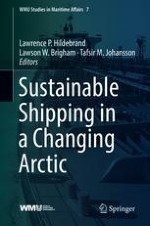2018 | OriginalPaper | Buchkapitel
Challenges for the Establishment of Marine Protected Areas in Response to Arctic Marine Operations and Shipping
verfasst von : Millicent McCreath, Lawson W. Brigham
Erschienen in: Sustainable Shipping in a Changing Arctic
Aktivieren Sie unsere intelligente Suche, um passende Fachinhalte oder Patente zu finden.
Wählen Sie Textabschnitte aus um mit Künstlicher Intelligenz passenden Patente zu finden. powered by
Markieren Sie Textabschnitte, um KI-gestützt weitere passende Inhalte zu finden. powered by
